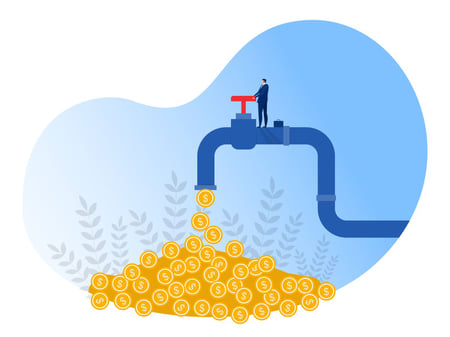I can say with some certainty that most of the readers of this blog didn’t wake up this morning hoping that I would write about ways of improving Days Sales Outstanding (DSO).
hoping that I would write about ways of improving Days Sales Outstanding (DSO).
If you have no idea what I am talking about, you are not alone. Days Sales Outstanding is one of those financial terms that in years past were kept in the background by finance departments but today has become a key metric that matters.
What is Days Sales Outstanding?
Days Sales Outstanding (DSO) is a measure of the average number of days that it takes a business to collect payment for a sale. Typically, a business offers its customer credit terms (how long it takes for them to pay you) which extends the time it takes to collect the cash. DSO is often determined on a monthly, quarterly, or annual basis.
To compute DSO, divide the average accounts receivable during a given period by the total value of credit sales during the same period and multiply the result by the number of days in the period being measured. DSO is an element of the cash conversion cycle and may also be referred to as days receivables or average collection period.
Why is DSO so Important?
More and more, Net Cash Flow is becoming a key metric of success. If you aren’t collecting cash but you are spending it, that puts the business in peril. Like blood that flows through the human body to keep it alive, cash is the lifeblood of any business. In other words, cash is king!
3 Ways of Improving DSO
The following insights are based on research, observations from our business acumen workshops, and focus groups with Financial Management executives.
Prepare and have a plan
Improving your DSO is not one of those things that you do in a haphazard fashion. It requires discipline and focus to identify the current situation and benchmark your current metrics. Overall, companies should focus on DSO reductions that are both attainable and sustainable in terms of the realities of the business. As participants learn in our digital business simulations exercises, companies may be able to reduce DSO by significantly tightening customer credit approvals. However, in business for every action, there is a reaction. The increase in ability to collect cash sooner will not be worth much if customer acquisition and retention suffer as a result of your taking away something that they use and have budgeted for.
Define your customer payment terms (and stick with them)
DSO metrics are directly influenced by the payment terms a company offers to its customers. These payment terms must carefully balance the company’s own DSO goals-against common industry practices and customer needs and expectations. That means identifying under what circumstances the company will offer customer incentives for faster payment, require deposits, or ask for upfront payments... all supported by a clear approval process when making these decisions.
Invoices must clearly and visibly state payment terms to reduce the chances of confusion over when payment is expected. The company should also be regularly communicating with customers about outstanding invoices and how the company can make it easier for customers to pay them. For example, some customers may be moving to electronic payments or prefer their employees to use payment cards for certain purchasing.
Update your invoicing processes
This one sounds the easiest, but it is the hardest to execute. Slow or inefficient accounting processes can also extend DSO. Therefore, reducing DSO often requires a focus on making sure that invoices are going out on time, contain all necessary information, and are error-free. That takes a lot of discipline and it’s a job nobody likes to do…especially sales professionals who are responsible for executing the commercial strategy.
From a finance department perspective, a thorough review of the billing process, including making sure there is a corresponding Purchase Order (PO) number, spot-checking invoices, and following up to make sure invoices were received by the right department can uncover errors, large or small, that could delay payment. Incorrect charges, invoices that do not reflect agreed-upon discounts, and even the wrong mailing address are just a few of the other common errors that can delay payments.
To avoid inefficiencies and confusion, companies should also regularly review and update policies on when to send invoices. When the contract is signed? At delivery of the product or service? Using another milestone?
Whatever it is, make sure that there is great consistency!
In summary, DSO is not a very sexy topic but when addressed and managed well, it can greatly increase cash flow and therefore shareholder value.




